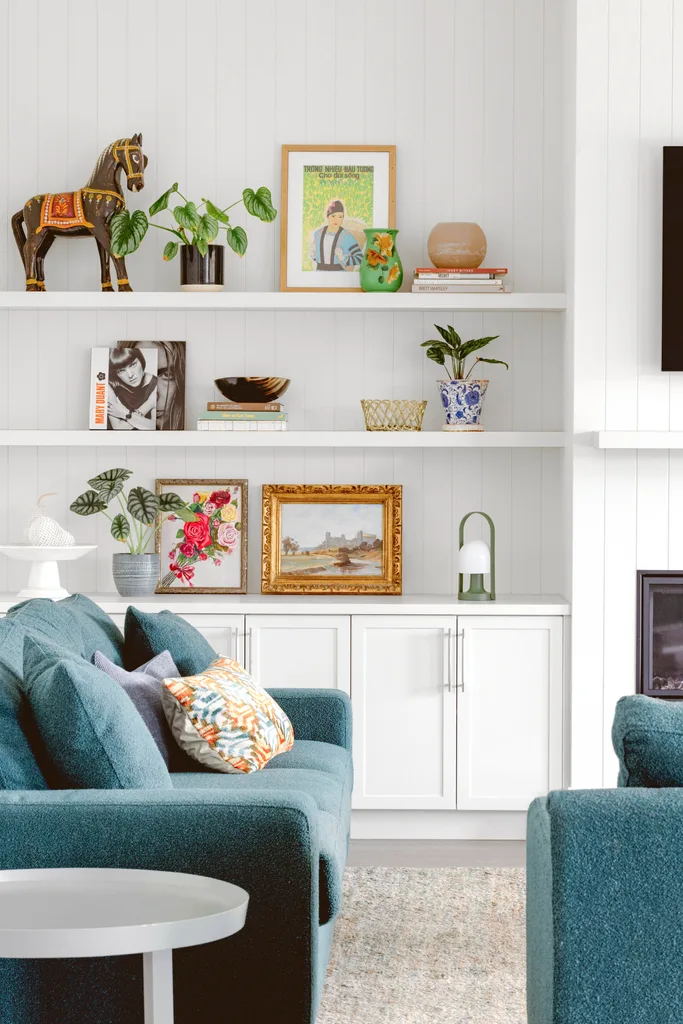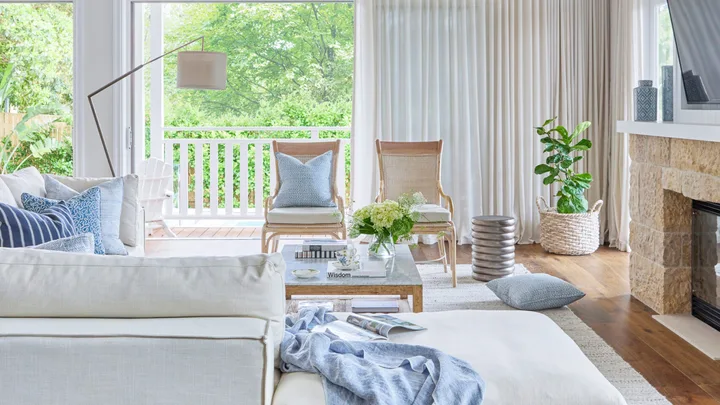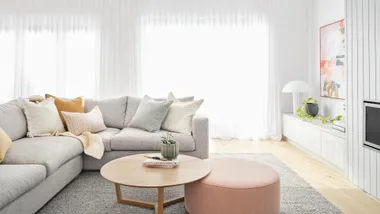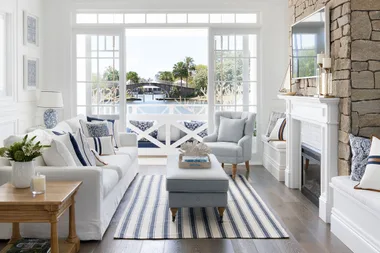If your living spaces are too cramped, too cluttered, untidy or worse – not being used at all, you may need to rethink your living room layout and change things up a little.
Depending on the floorplan of your home, the living room should play an integral part in how you and/or your family use live, work and play there. There are ways to arrange furniture that will make the space flow and ways to arrange furniture that can work against you. Here are our tips for making the space work for you.
1. You feel boxed in
Your sofa is probably the biggest piece of furniture you have and further, is one of the most important investment pieces you will buy. Make sure it pays you back by working hard to bring all of your other pieces together.
Consider “conversation areas” with other furniture, placement under artwork or in relation to the TV and ensure there is plenty of space to move around it.

2. Entertainment equipment is taking over
Be realistic about how you use the space. If you watch TV in your living room with your family, set up the furniture so you can do so comfortably.
If this is where gaming takes place, choose furniture that can house all of the technology required and hide it away when not in use.
3. The coffee table is always in the way
A coffee table is a stylish addition to a living space but only if there is sufficient room to accommodate it.
You may be better to opt for smaller side tables positioned next to furniture and moved around if space doesn’t allow for a central larger statement piece. Other items such as your rug or artwork can make a design statement for you.

4. The rug isn’t the right size
Choosing a rug for your living room is not a decision to be rushed. It’s one of the most important pieces you’ll buy for the space. Colours can change with different lighting and the idea of size and scale of a rug in relation to both your room and other furnishings may also be deceptive until you get it home.
Most rug shops and larger department stores offer a service where you can take home the rug you have in mind to see it in situ – take this chance to see how both the colours and size work in the space and work through the layout options with the rug in hand.
5. There’s stuff on every surface
Wall art and objet d’art can make or break a space and a general rule of thumb is that less is more. One large framed print speaks volumes and is worth the time and trouble of searching for the right piece, rather than filling the space with smaller pieces you are less fond of and that don’t hit the right tone for the living room.
Place bookshelves adjacent to, rather than inside the immediate living space and style it up with a careful edit of objects that are meaningful, rather than cluttering surfaces with impulse items purchased without the space in mind.

6. Not enough storage
Storage is key in such a busy space and must be managed and reconsidered as families grow, lifestyle changes and things build up over time.
Dedicated storage for throws in the warmer months, toys and the paraphernalia of other activities that take place in the family room is the most effective way to ensure your layout works for you.
If you find working in the living room is the best use of your time and space, create an organised nook with stylish storage for stationery and paperwork to keep it clutter free.
7. No real thoroughfare
Arrange furniture so that people don’t need to walk through the conversation area or TV viewing space to get from one side of the room to the other.
Allow adequate seating for people to sit and chat incidentally whilst you prepare meals. Watch how people move through the room and don’t be afraid to try a few different combinations before you get it right.

8. Too many activities
If “a family who plays together stays together” sounds like you, demarcate areas within the living zone for different tasks so that everyone gets their own space.
There’s a limit though – some tasks are better performed away from the group if they’re loud or disruptive. Create an area elsewhere in the home if needs be.



